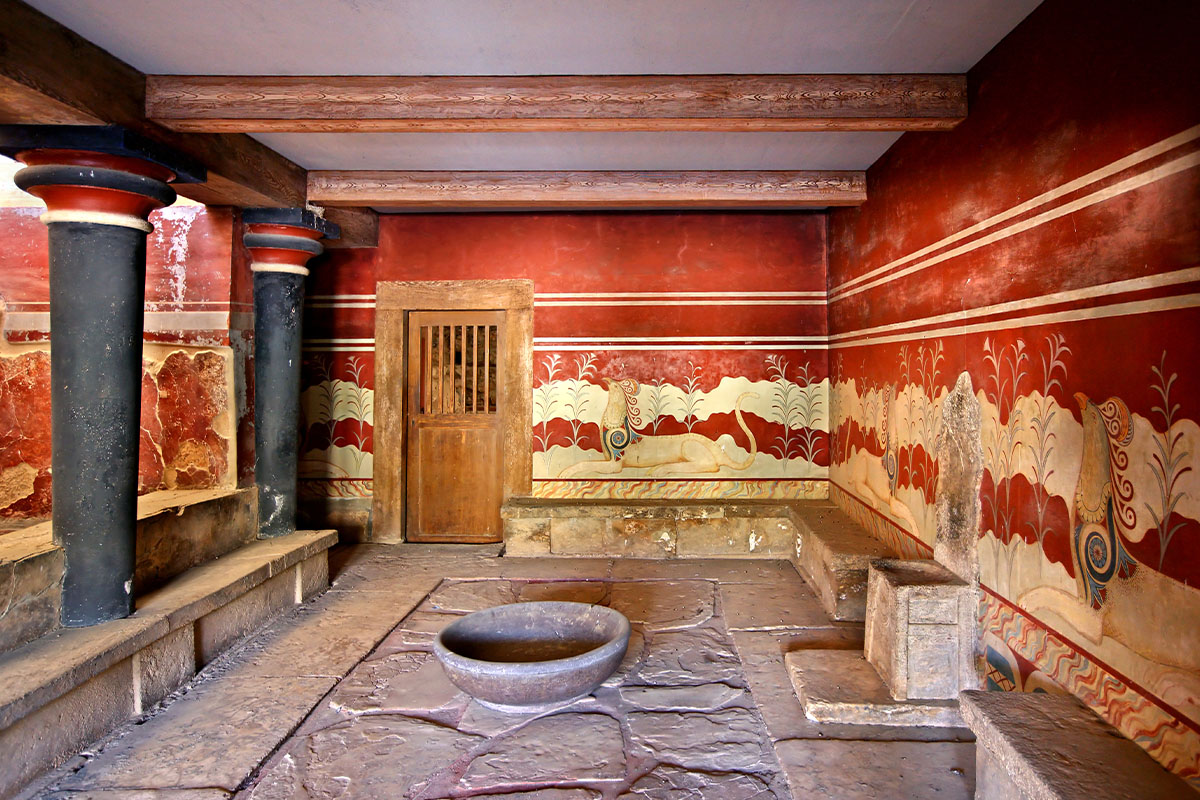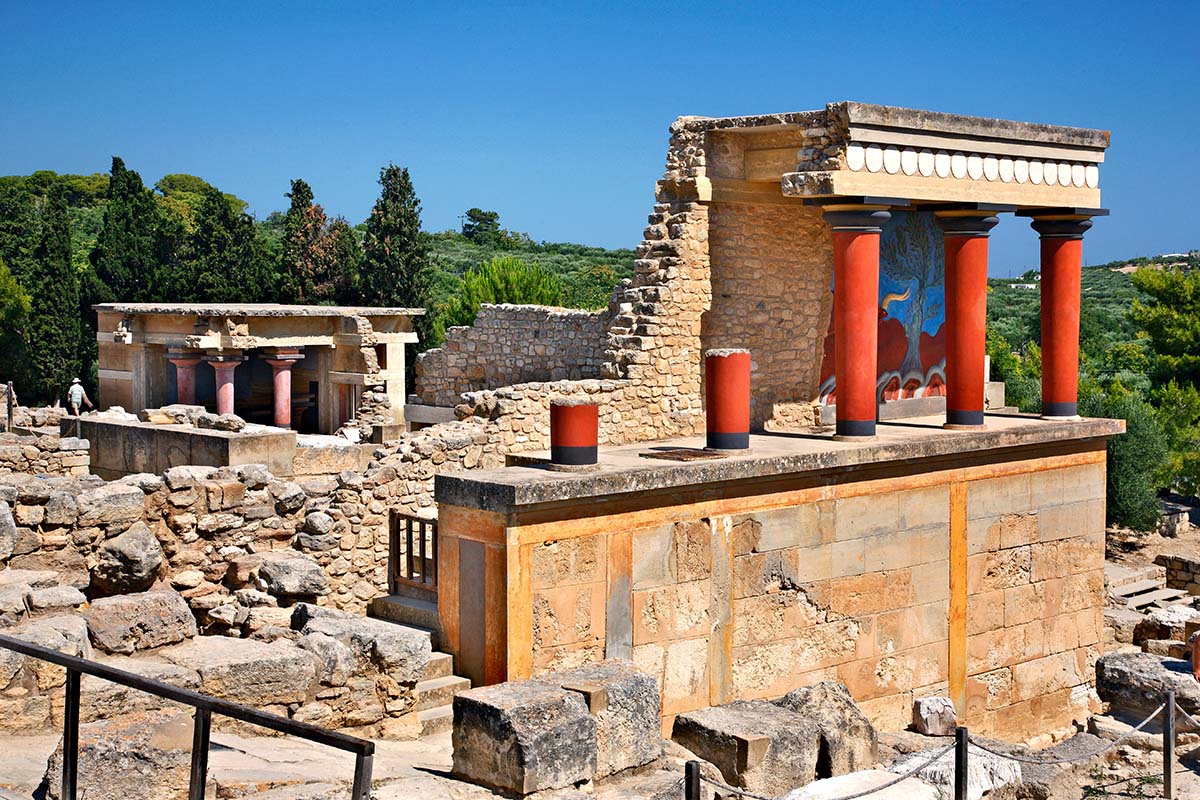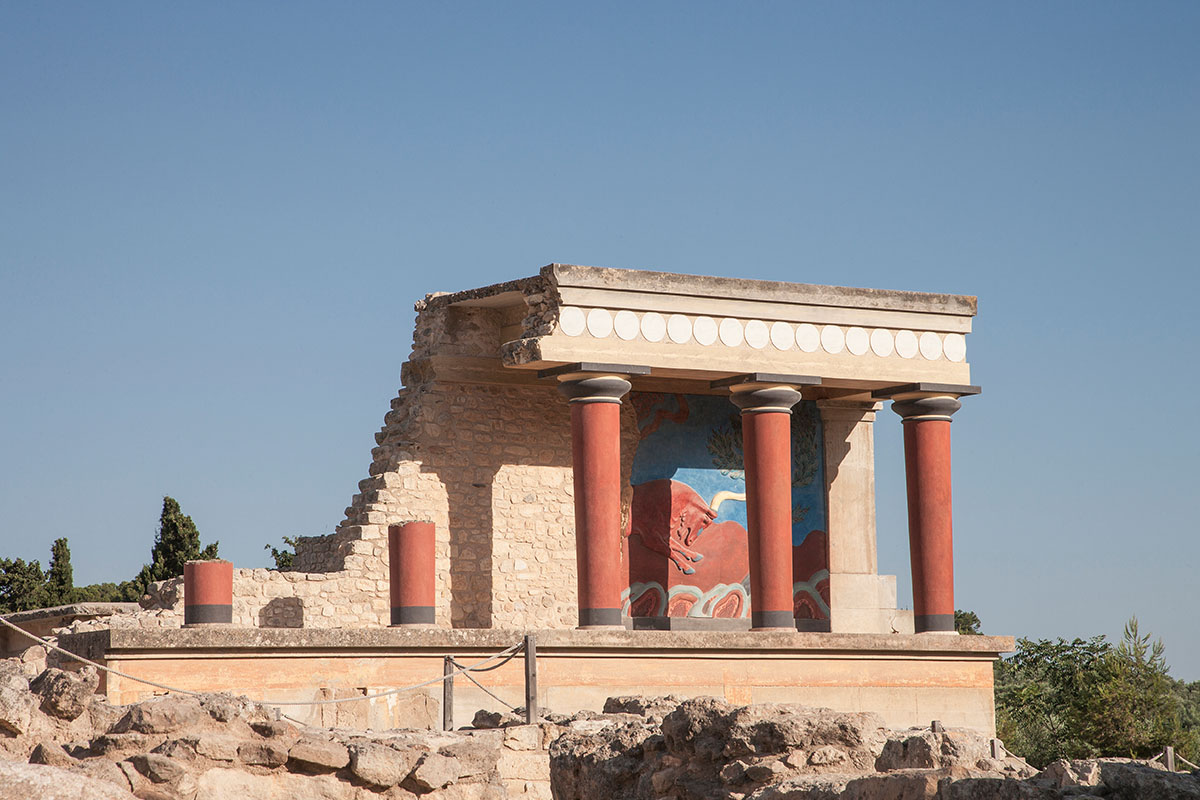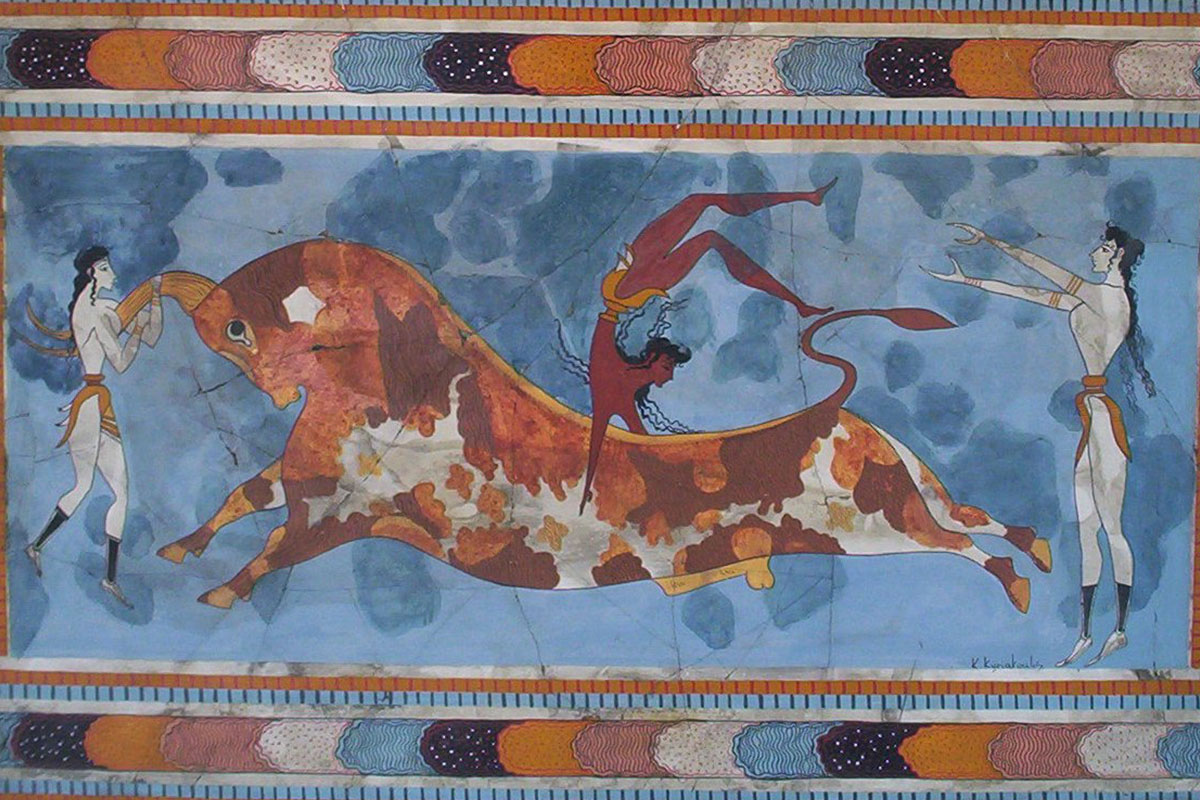


T he palace of Knossos, the largest and most important Minoan palace, is considered the centre of Minoan power and the seat of the mythical King Minos. It covers a vast area and impresses with its complex architecture, characterized by labyrinthine corridors, ceremonial halls, luxurious frescoes, underground deposits and advanced plumbing systems. The complexity of its structure inspired the myth of the Labyrinth and the Minotaur, which remains one of the most famous stories in Greek mythology.
The area of Knossos was already inhabited from the Neolithic period (7000 BC), but the first palace was built around 1900 BC and was destroyed by an earthquake. The new and more magnificent palace, built around 1700 BC, was the administrative and religious centre of Minoan Crete, controlling trade, shipping and agriculture on the island.
Knossos is directly linked to the myth of the Minotaur, a mythical creature with a human body and a bull's head, who lived in the Labyrinth built by Daedalus. According to the myth, the hero Theseus, with the help of Ariadne and the famous "Mitos of Ariadne", managed to kill the monster and get out of the Labyrinth.
The Minoan frescoes of Knossos reveal a glorious civilisation full of life, colour and movement. The most famous are:
The Bull Burials, depicting young men and women performing acrobatics on a bull, showing the importance of the animal in Minoan religion.
The Parisian woman, showing a well-dressed young woman in elegant clothes and jewellery, exemplifying the aesthetics and fashion of the time.
The Prince in Lily Wreaths, depicting a young man in rich clothing and a crown of flowers, a symbol of nobility and prestige.
Knossos testifies to the advanced civilization of the Minoans, as the palace had a sewage and plumbing system, windows for natural lighting and ventilation, colourful floors, elaborate wooden columns and large storerooms. It was a wonder city for its time, showing the high level of Minoan expertise.
Knossos, the most important archaeological monument of Crete, is one of the most emblematic sites of ancient Greece. As the centre of Minoan civilisation, it impresses with its palace architecture, ornate frescoes and historical significance. The myth of the Minotaur and the famous Labyrinth are inextricably linked to Knossos, giving it a sense of mystery that fascinates every visitor. Sir Arthur Evans' excavations revealed a highly advanced civilization, with technological innovations that are a source of wonder. Knossos remains a living monument that offers a fascinating journey into the past, revealing the heyday of the Minoan Empire.

A journey through time, to the heart of the Minoan Empire! Wander through the ruins of the palace, discover the ceremonial halls, the labyrinthine corridors and the stunning frescoes that reveal the Minoan aesthetics and lifestyle.